Rabbi Nachum Asz
-Chief Rabbi of Częstochowa
The Gaon of Częstochowa
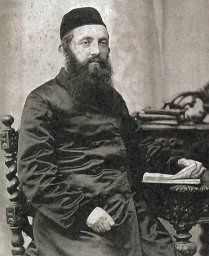 Rabbi Nachum Asz was born in 1858 in Grodzisk, near Warsaw, His father, David Hersz, was a renowned Talmud scholar. On his mother’s side, his grandfather, Leon Landau, was the author of several religious books.
Rabbi Nachum Asz was born in 1858 in Grodzisk, near Warsaw, His father, David Hersz, was a renowned Talmud scholar. On his mother’s side, his grandfather, Leon Landau, was the author of several religious books.
Already as a teenager, when Nachum Asz studied at the famous Talmud school of Rabbi Lewental in Kole, he was known as an extremely clever student.
The next step was the school of Rabbi Samson Arensztajn, the Rabbi of Kalisz. There, Nachum Asz received the title of Rabbi and married Rabbi Arensztajn’s daughter, Sara. Nachum Asz obtained his first rabbinical position in Nieszawa, a position he held for several years.
In 1889, at the age of 31, Nachum Asz was called to the position of Rabbi of Częstochowa. For 47 years, until the time of his death in 1936, he held the position of the city’s Chief Rabbi and was the pride and joy of the Jewish community of Częstochowa.
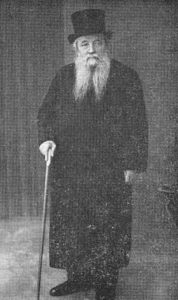 A very wise man, he chaired the Court of Arbitration and also produced several religious books in Yiddish and Hebrew. At the same time, he was active in communal life and was known throughout Poland.
A very wise man, he chaired the Court of Arbitration and also produced several religious books in Yiddish and Hebrew. At the same time, he was active in communal life and was known throughout Poland.
In the last years of his life, a major problem arose with the threat of forbidding ritual (Kosher) slaughter in Poland. An antisemitic front, headed by parliamentarian Janina Prystorowa, with the participation of Father Trzeciak as an “expert” on Talmud, proposed that the Sejm (Parliament) issue a law forbidding ritual slaughter. Only one Talmud scholar, Professor Tadeusz Zaderecki, stood in defence of the Jewish proposition that ritual slaughter was, in fact, “humane”.
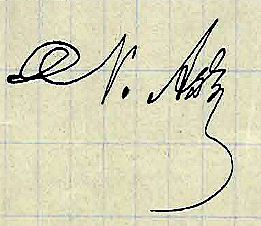 Rabbi Asz (his signature, pic left) took an active role in defence of ritual slaughter. With the help of two of his sons, in 1935 he published a book entitled In Defence of Ritual Slaughter. The book was a great success. The Jewish Community Council of Warsaw published a second edition which it distributed to all members of the Sejm with the aim of presenting the arguments from the Jewish point of view.
Rabbi Asz (his signature, pic left) took an active role in defence of ritual slaughter. With the help of two of his sons, in 1935 he published a book entitled In Defence of Ritual Slaughter. The book was a great success. The Jewish Community Council of Warsaw published a second edition which it distributed to all members of the Sejm with the aim of presenting the arguments from the Jewish point of view.
The Jewish Community Council of Częstochowa then published a third edition of the book. Rabbi Nachum Asz was now famous throughout Poland.
As Gaon, Nachum Asz was in constant contact with the Bishop of Częstochowa, Teodor Kubina. At the same time, he was also Chaplain to the Polish Army garrison stationed in Częstochowa.
Highly learned, he was interested in both Jewish and international affairs. As a member of Mizrachi, a religious-Zionist party, he was one of the first great Polish rabbis to accept Zionist ideology at a time when the majority of Orthodox rabbis were against it.
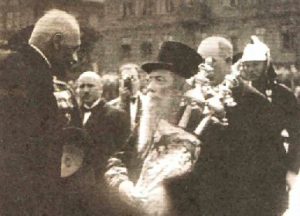 In 1904, as President of the Committee to Aid Pogrom Victims, Rabbi Asz busied himself raising money. So as not to embarrass the people who were helped, he proposed that the money be distributed in the form of loans, as opposed to charity. When asked why, Rabbi Asz replied that, according to our religion, the most important thing was to help people – not merely to give charity – and in any case, no one would worry about the money being repaid. It was a question of honour – it would be easier for people to accept a loan rather than charity.
In 1904, as President of the Committee to Aid Pogrom Victims, Rabbi Asz busied himself raising money. So as not to embarrass the people who were helped, he proposed that the money be distributed in the form of loans, as opposed to charity. When asked why, Rabbi Asz replied that, according to our religion, the most important thing was to help people – not merely to give charity – and in any case, no one would worry about the money being repaid. It was a question of honour – it would be easier for people to accept a loan rather than charity.
As an influential personality, Rabbi Asz raised considerable funds for both Keren Hayesod and Keren Kayemet, zionist charitable foundations.
In 1934, he founded and chaired the committee to raise funds for the rebuilding of the 100-year-old religious Beit Hamidrash school. Shortly after his death, in recognition of his contribution and efforts, the Jewish Community Council directed that the new school be called Ohel Nachum.
Rabbi Asz took a large role in the building of Hachnasat Orchim – a refuge for the extremely poor, within which was also a religious school and prayerhouse.
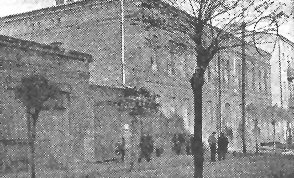 In the 1920’s, a new mikvah was built (pic right) – again at the instigation of Rabbi Asz.
In the 1920’s, a new mikvah was built (pic right) – again at the instigation of Rabbi Asz.
In 1925, numerous celebrations were organised to mark the opening of the Hebrew University in Jerusalem. In Częstochowa, Rabbi Asz delivered a speech in Hebrew and a brochure containing his teachings in Yiddish was published to mark the occasion.
During the time of his governance, the Rabbi solved numerous and important disputes between Jewish secular and Orthodox groups, and performed thousands of religious and scholarly activities. His pronouncements always carried a high moral value.
His brother-in-law, Rabbi Moshe Halte (pic left)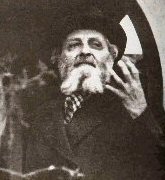 , was also a renowned Talmud scholar. He chaired the Chevra Kadisha – an organisation which dealt with Jewish burials. Rabbi Asz was also the cousin of Nachum Sokolow, the chairman of the World Zionist Organisation and also a distant relative of the famous writer, Shalom Asz.
, was also a renowned Talmud scholar. He chaired the Chevra Kadisha – an organisation which dealt with Jewish burials. Rabbi Asz was also the cousin of Nachum Sokolow, the chairman of the World Zionist Organisation and also a distant relative of the famous writer, Shalom Asz.
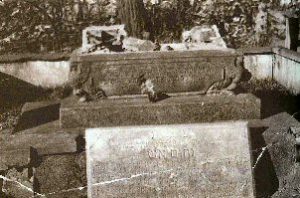 Rabbi Asz left nine children – five sons and four daughters. A pious man, he was also tolerant and permitted his children to undertake “worldly” studies. In those days, this was extremely rare. One daughter became a teacher, one son became a journalist and another son became a Doctor of Laws and a Czestochowa City Councillor.
Rabbi Asz left nine children – five sons and four daughters. A pious man, he was also tolerant and permitted his children to undertake “worldly” studies. In those days, this was extremely rare. One daughter became a teacher, one son became a journalist and another son became a Doctor of Laws and a Czestochowa City Councillor.
Rabbi Asz died on 12th May 1936. He went to the synagogue for a memorial service to mark the first anniversary of the death of Marshal Jozef Piłsudski. Perhaps moved by the emotion of the occasion, Rabbi Asz suffered a heart attack and, within a few hours, he tragically passed away. His passing was greatly mourned amongst the Jewish community. His funeral was huge event.
Rabbi Nachum Asz was a great personality. He presided over the religious Jewish community of Częstochowa for forty seven years (1889-1936) – right up until his death at the age of 78.
Source:
The Webmaster gratefully
acknowledges the help of
SEVEK GRUNDMAN
and his daughter
JOELLE
in creating this
tribute page.
